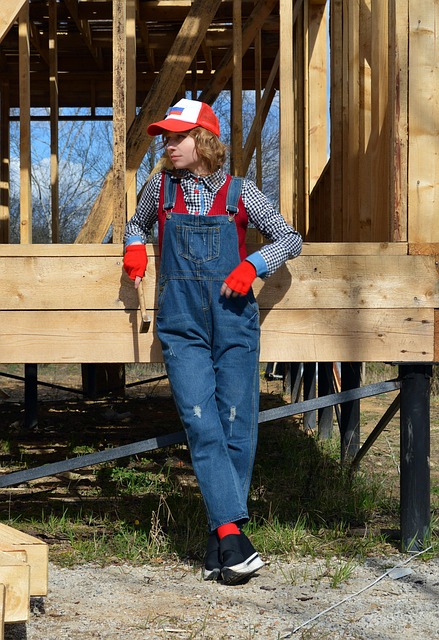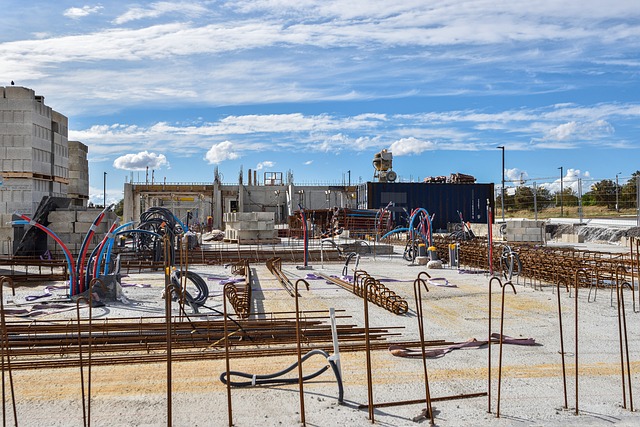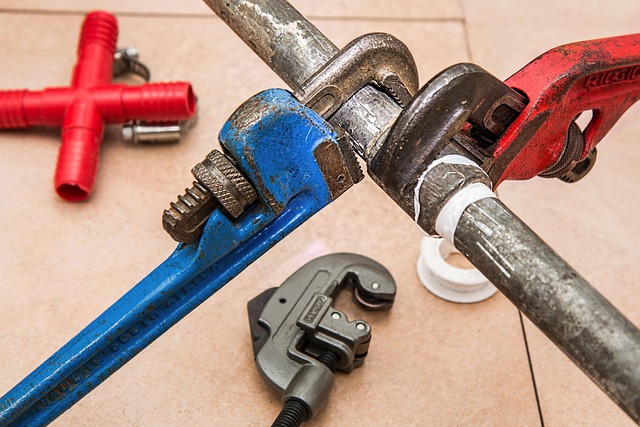Pier and beam foundations, common in older homes, require regular inspection for settling or shifting issues. Early repairs prevent costly damage. Effective repair techniques include reinforcing weak points, addressing soil support, and sealing against water intrusion. Timely intervention preserves structural integrity, ensures safety, and maintains property value. Modern Pier and Beam Foundation Repair uses advanced equipment and materials like custom steel braces and high-performance concrete to provide lasting stabilization. Proper material selection tailored to local conditions is crucial for successful repairs. Regular maintenance and visual inspections are key to preventing stability loss. This repair method has successfully revitalized historic structures, securing their long-term stability.
Pier and beam foundations, a common structural system, support countless homes. However, over time, these foundations can develop issues like settlement cracks, uneven floors, or bowed walls. This article delves into the world of Pier and Beam Foundation Repair, offering a comprehensive guide to understanding common problems, exploring advanced restoration techniques, and implementing long-term maintenance strategies. Learn about effective Pier Foundation Repair solutions through real-world case studies, ensuring your home’s structural integrity for years to come.
Understanding Pier and Beam Foundations: A Basic Overview

Pier and beam foundations, a common structural system, support buildings by transferring weight from the structure to soil bearing capacity. This method, often seen in older homes, features vertical piers connected to horizontal beams that create a stable platform for the building’s load. Over time, these structures can suffer damage due to various factors like settling, shifting soils, or poor construction, necessitating Pier and Beam Foundation Repair.
Regular inspection is key to identifying potential issues early on. Signs of trouble may include cracks in the foundation walls, uneven floors, or doors that stick. Prompt action is crucial; minor repairs can prevent major, costly problems down the line. Effective Pier and Beam Foundation Repair techniques involve assessing the extent of damage, reinforcing weak points, and ensuring proper soil support to restore structural integrity.
Common Issues and Problems with Pier and Beam Foundations

Pier and beam foundations, while popular for their versatility and ability to support structures in various terrains, are not immune to issues over time. Some common problems include structural damage caused by inadequate pier spacing, settling or shifting of the soil beneath, and water intrusion leading to rot or corrosion in the wooden beams. These issues can result in cracks in walls, uneven floors, doors that stick or fail to close properly, and other signs of structural compromise.
Proper Pier and Beam Foundation Repair involves addressing these problems at their root cause. This may include adjusting pier placement for better support, installing additional piers to distribute weight more evenly, repairing or replacing damaged beams, and sealing off potential entry points for water or pests. Timely intervention is key to maintaining the integrity of these foundations, ensuring safety and preserving the value of the property.
The Role of Foundation Support Solutions in Repair and Maintenance

Foundation support solutions play a pivotal role in ensuring the longevity and stability of structures, especially those built on pier and beam foundations. These specialized services are crucial for repairing and maintaining the intricate network of supports that forms the base of many homes and commercial buildings. When a pier and beam foundation shows signs of damage or settlement, timely intervention is key to preventing further deterioration.
Reputable foundation support companies employ advanced techniques and materials to stabilize and strengthen these foundations. By addressing issues like sinking piers, rot in wooden beams, or damaged footings, they can effectively restore structural integrity. Regular maintenance checks are recommended to identify potential problems early on, making repairs more manageable and cost-effective. This proactive approach ensures that structures remain safe, sound, and secure for years to come.
Advanced Techniques for Pier Restoration and Stabilization

In the realm of Pier and Beam Foundation Repair, advanced techniques have emerged as game-changers, revolutionizing the way structural integrity is restored. One such innovative approach involves the utilization of specialized equipment and methods to address complex issues within these foundation systems. By employing modern tools like hydraulic jacks, engineers can precisely manipulate and realign beams, effectively addressing misalignments that may have gone unnoticed through traditional inspection methods.
Additionally, the integration of advanced materials has enhanced stabilization efforts. Modern pier support solutions come in various forms, from custom-engineered steel braces to high-performance concrete sleeves. These materials offer superior strength and durability, ensuring long-lasting repairs. Through careful assessment and tailored applications, these advanced techniques not only stabilize existing structures but also provide a robust foundation for future growth, effectively mitigating the need for frequent maintenance.
Choosing the Right Materials for Pier and Beam Repairs

When undertaking pier and beam foundation repair, selecting the appropriate materials is paramount for long-lasting results. The structural integrity of a pier and beam system relies on using high-quality components that can withstand environmental factors like moisture, corrosion, and varying temperatures. Common choices include treated lumber for timbers, which offers resilience against rot and pest damage, and steel beams for enhanced strength and durability. These materials should be tailored to the specific repair needs, considering the extent of damage and local climate conditions.
Proper material selection ensures the stability and safety of the foundation. For instance, using stainless steel bolts instead of regular ones can significantly improve resistance to rust, while choosing concrete with a high compressive strength guarantees robust repairs that can support heavy loads. Each component plays a crucial role in the overall stability of the pier and beam structure, making material choices an integral part of any Pier and Beam Foundation Repair project.
Long-Term Strategies for Maintaining Structural Integrity

Maintaining the structural integrity of a pier and beam foundation over the long term is paramount to ensuring the longevity of any building or structure. Regular, proactive assessments are key; examining the condition of the piers, beams, and supporting elements for signs of decay, damage, or misalignment. This involves visual inspections as well as utilizing advanced diagnostic tools to pinpoint potential issues early on.
Implementing a structured maintenance plan tailored to the specific needs of pier and beam foundations is essential. This includes regular cleaning and sealing to protect against moisture intrusion, which can accelerate wood rot and other forms of damage. Reforesting or replacing deteriorated structural elements in a timely manner, along with periodic adjustments to ensure proper alignment, will help maintain stability and prevent costly repairs down the line.
Case Studies: Successful Pier and Beam Foundation Repair Projects

In the realm of structural integrity, Pier and Beam Foundation Repair stands as a game-changer for many aging buildings. Case studies highlight successful projects where this innovative solution has restored stability to once-fragile structures. For instance, in a bustling metropolis, a historic landmark was facing imminent danger due to failing pier and beam foundations. The challenge was significant, with extensive damage and a complex repair process. However, through meticulous planning and the implementation of advanced Pier and Beam Foundation Repair techniques, engineers successfully revitalized the building’s foundation, ensuring its longevity for future generations.
Another compelling example involves a modest residential property plagued by sinking floors and uneven walls—classic signs of compromised pier and beam foundations. The solution involved a comprehensive assessment, followed by strategic repairs focused on strengthening the underlying structure. By replacing faulty beams, installing new piers, and utilizing modern sealing materials, the repair team achieved remarkable results. The once-troubled home now stands sturdy, with its structural integrity restored—a testament to the effectiveness of Pier and Beam Foundation Repair in addressing even the most delicate of structural issues.
